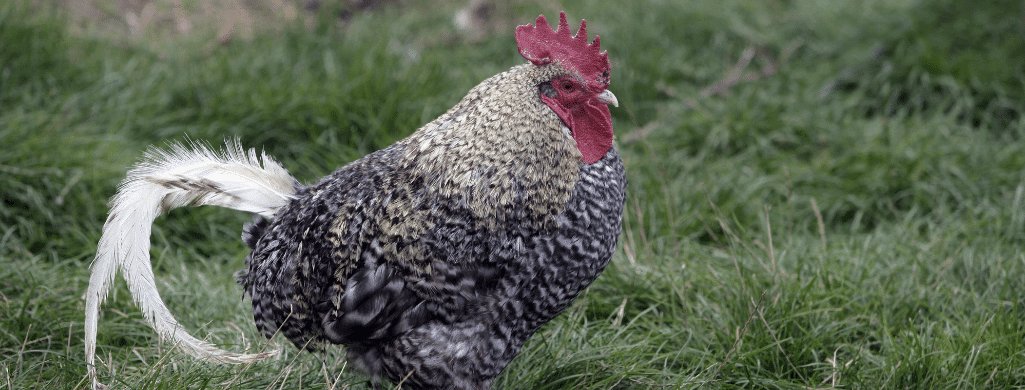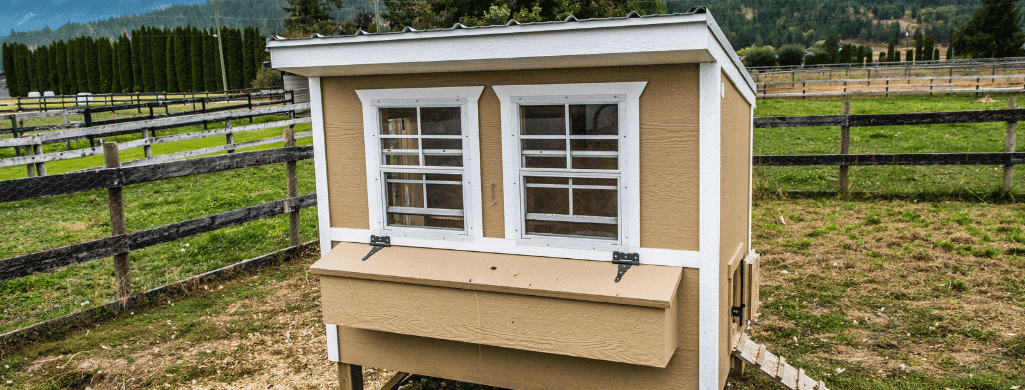French Marans chickens are one of the coolest-looking fowl available for backyard farmers.
But their uniqueness means their care needs are a bit different than the standard hen.
Temperature and weather, in particular, are big ones in particular, which begs the question:
Are Maran chickens cold-hardy?
The Marans chicken’s large body and fluffy plumage make it well-suited to colder climates. Even though the Marans chicken is winter hardy, special care must be taken to ensure the bird does not suffer from frostbite on its comb or feet.
You must also ensure your Marans chickens are kept dry and warm at night when temperatures in the winter months are at their lowest.
When the dense plumage of a Marans gets wet, it takes a while to dry off, making the bird more susceptible to cold temperatures.
Read on to learn how to protect your Marans chickens in cold climates.

Table of Contents
ToggleWhat Are the Coldest Temperatures Marans Can Withstand?
Marans chickens are hardy birds, able to withstand temperatures just below 32° degrees Fahrenheit (0° C) as long as they are kept dry.
Chickens have several layers of body feathers which trap air next to the skin and keep their bodies warm.
If your Marans’ fluffy feathers get wet from playing in the snow or being left out in the rain, they can no longer retain heat.
Whenever your Marans chickens get wet in the winter months, it is crucial to wrap the birds in a towel or use a blow dryer to dry them off before putting them in the coop at night.
It is not fair to your Marans to keep them inside the chicken coop all winter, as they are active birds and will become restless.
Allow your Marans out of the coop to get some fresh air in the winter, but limit their time outdoors if temperatures during the day are well below freezing.

Are Marans Chickens Prone to Frostbite?
Marans have medium to large single combs, which are more prone to frostbite than breeds with pea-sized combs.
Roosters are especially prone to frostbite because of their more prominent combs, which will also happen to hens.
The fleshy combs are exposed to frigid temperatures without feathers insulating them.
You will know your Marans has frostbite on its comb if you see black spots at the tips.
These black spots are dead tissue and will not grow back.
Do not attempt to trim away these blackened areas.
Instead, wrap your Marans in a soft towel and place a warm, wet washcloth on the comb to increase blood flow to the area and prevent the damage from spreading.
Take care not to rub the affected area.
French Marans with fluffy leg feathers are also prone to frostbite on their feet and toes, especially if the feathers are wet in freezing temperatures.
If you notice signs of frostbite on your bird’s feet, move it to a warm place as soon as possible.
Severe frostbite will cause lameness in your Marans and may require surgery to amputate any affected toes.
Do Marans Lay Eggs in the Winter?
Marans are a dual-purpose breed, and they are decent layers.
A Marans hen will typically lay 4-5 large brown eggs per week for an average of 150-200 brown eggs per year.
Egg production varies from bird to bird and depends on several factors, including overall health, living conditions, and diet.
The eggs from a Marans hen will be dark brown at the beginning of the laying season.
As the hen continues to lay eggs, they will gradually become lighter brown due to the limited amount of pigment in the oviducts.
Marans may continue to lay eggs through winter if temperatures are mild.
Egg production may decline in Marans if they live in areas with particularly harsh winters.
It is normal for many breeds of chickens to completely stop laying eggs in winter.
Further Reading: Everything you ever wanted to know about Marans chicken eggs

How To Protect Marans Chickens in the Winter
Marans are a hardy breed, but this does not mean they do not need some extra attention in winter.
If you live in a climate with harsh winters, protecting your Marans from the elements will prevent dangerous conditions like hypothermia and frostbite.
There are several ways to keep your Marans warm and dry throughout the winter.
Keep Them Dry
Keeping your Marans dry is vital for them to stay safe during cold weather.
The fluffy leg feathers on French Marans are prone to getting wet, which could lead to frostbite if temperatures are cold enough.
If your Marans have been running through the snow or splashing about in water puddles, ensure they are dry before putting them in the coop at night.
Use a towel or a blow dryer on the low setting to gently dry the leg feathers of your Marans.
Remove mud from the feet of your Marans, as clean-legged birds are at a lower risk of frostbite.
To prevent your Marans chickens from getting wet, keep the chicken run free of snow and add a layer of pine pellets or wood chips to prevent puddles from forming.
You may also use a clear tarp to create a roof over the chicken run if you live in an area with lots of rainfall.
The clear tarp will keep the chicken run dry while allowing sunlight to shine through.
When it rains, herd your Marans into the coop to keep them dry.
Protect Their Combs and Feet
Marans are prone to frostbite on their combs and feet, but it is easily preventable.
Rub a thin layer of petroleum jelly or coconut oil on your Marans’ combs and feet to create a barrier against frigid temperatures.
The protective barrier will repel moisture and insulate the comb and feet.
Insulate the Chicken Coop
Eliminating drafts and insulating the chicken coop is crucial to protecting your Marans in cold climates.
Unlike adult chickens, baby chicks are unable to regulate their body temperatures.
Baby chicks are much smaller and have not developed their dense plumage, making them more susceptible to cold temperatures.
It is unlikely for egg-laying hens to hatch baby chicks in the winter.
If you have baby chicks in the colder months, you may need to move them into a warm brooding box inside your home or garage until they are older.
The coop should not be completely air-tight, as adequate ventilation is necessary to prevent moisture buildup.
Placing air vents close to the roof allows fresh air to flow in where it is not directly blowing onto your chickens.
Inspect the coop for cracks or holes where cold air could blow through.
Sealing these small cracks and holes also prevents small predators from entering the coop.
Never place a supplemental heat source inside the chicken coop.
Heat lamps and space heaters increase the fire risk, and they are unsafe to use around your Marans.
Marans have dense plumage, and they are not heat tolerant.
Adding a heater to the coop will cause the large birds to become overheated quickly.
The body heat from your Marans is enough to keep the entire coop warm.
Even when temperatures outside are in the teens, temperatures inside the coop will be well above freezing if it is properly insulated.
Keep the Chicken Coop Clean
Regularly clean the chicken coop to remove debris and moist bedding.
Moisture is the enemy of your Marans in cold temperatures and makes your birds prone to frostbite.
Change the bedding in the coop at least once per week to prevent excess moisture buildup and harmful bacteria.
How useful was this post?
Click on a star to rate it!
We are sorry that this post was not useful for you!
Let us improve this post!
Tell us how we can improve this post?
